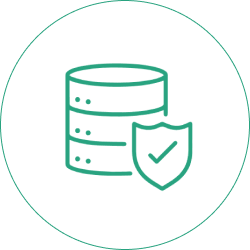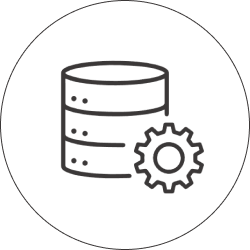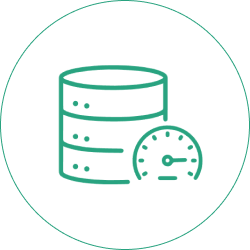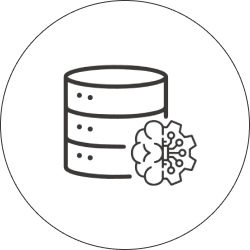In large global enterprises, disconnected teams and end users are continuously creating solutions to capture, store and transform data.
End users tend to be drawn to software they are familiar with—spreadsheets, shared drives, simple off-the-shelf databases, etc.—and rarely take time to consider the long-term implications of their data storage practices. The freedom to generate and manipulate data with little oversight or structure does temporarily increase speed for end users. However, it also dramatically increases operational risk by creating dark data, data silos, unnecessary microtasks and data lineage problems.
The Risks of Unmanaged Data
Fragmented data is unmanaged data. Data discontinuities and a proliferation of dark data – data that is routinely collected and stored by an organization but not tracked or used – transform data that would otherwise be a competitive advantage into a serious liability.
Furthermore, when data is controlled by end users, the process of accessing and using that data is often highly manual. Each stage of loading, processing, extraction and analysis creates new opportunities for errors to enter an organization’s data ecosystem, and these manual microtasks waste incredible amounts of time.
In addition to these profound logistical risks, there are also strategic risks posed by fragmented and unmanaged data. Enterprise data practices often lack end-to-end visibility. Leaders find themselves unable to interrogate data in real time because that data is buried in disconnected data silos. Lack of visibility hampers strategic decision-making, and because data assets live within silos, senior executives often have no way of knowing just how fragile and incomplete their data ecosystem really is.
In many industries, unmanaged data also presents serious regulatory risks. In banking, for example, regulators now want to see not just summations of data, but the lineage of that data. Data silos, data discontinuities, dark data and data ownership issues make it difficult for organizations to efficiently cross-validate data, institute robust controls, complete reliable self-assessments and capture data lineage. As regulatory authorities seek to encourage data robustness and diminish reliance on unmanaged data, they are levying significant fines for noncompliance.
Data Management = Automation
A data-driven approach to operational resilience is rooted in automation. Enterprises must comprehensively minimize the manual entry, calculation and transformation of financial and operational data.
Data automation moves disconnected data sources into a single transparent and unified data universe, while replacing manual microtasks with automated data capture, transformation and reporting. Reliance on single golden data sources improves quality checks and validations. Less time is spent manually re-checking error-prone documentation. Firms are empowered to more accurately and rapidly predict business outcomes in the event of sudden change. They can absorb shocks and maintain business continuity despite impacts on resources, data systems and infrastructure. Firms also gain confidence in their operational risk frameworks, including their self-assessments of controls and governance.
Xceptor, one of our data automation ecosystem partners, recently engaged with a global top-tier bank that provides consumers, corporations, governments and institutions with a broad range of financial products and services, including consumer banking and credit, corporate and investment banking, securities brokerage, transaction services and wealth management. This bank considers unmanaged data to be its number one business problem and strategic focus. Given the complexity and high stakes of serving so many global stakeholders, solving their unmanaged data problem became a vital de-risking enterprise, and the Xceptor platform was deployed across the bank to modernize its data practices.
Four Benefits of Data Automation
Fortunately, data automation does not require massive overhead to set up and maintain. By undertaking a thoughtful approach to data automation and management, businesses will strengthen their operational resilience in four crucial areas:




Achieving Data Automation
Data automation begins with an inventory and risk assessment, which informs a remediation path and delivery strategy that first targets the most high-impact and high-risk data assets. Given the complexity of data flows across organizations, there is currently no one-size-fits-all approach to data automation. However, complimentary low-code solutions can target data capture, process automation, and workflow and computation functions.
Both within and across industries, enterprises can be extraordinarily diverse in how they capture and transform data. Consequently, a data automation programs must be context-specific, responding to each organization’s unique set of applications and workflows. However, the benefits of data automation are remarkably consistent across all enterprises: a solution stack that preserves user-driven functionality while strengthening data integrity, improving data control and governance, and reducing the amount of time and money spent laboriously verifying routine data.
Data automation transforms data from a source of operational risk into a foundation for operational resilience.
James Harrup-Brook
Risk and Compliance Domain Consulting Partner
James has 15 years of experience in transformation and change management in the investment banking industry. He is passionate about reducing regulatory risk and driving value though the delivery of technology-enabled business transformations, and has worked with clients such as Citi Bank, Bank of America, Credit Suisse, Deutsche Bank, UBS and Ernst & Young.
Contributors
Luke Sykora – Content Writer, iDEAS